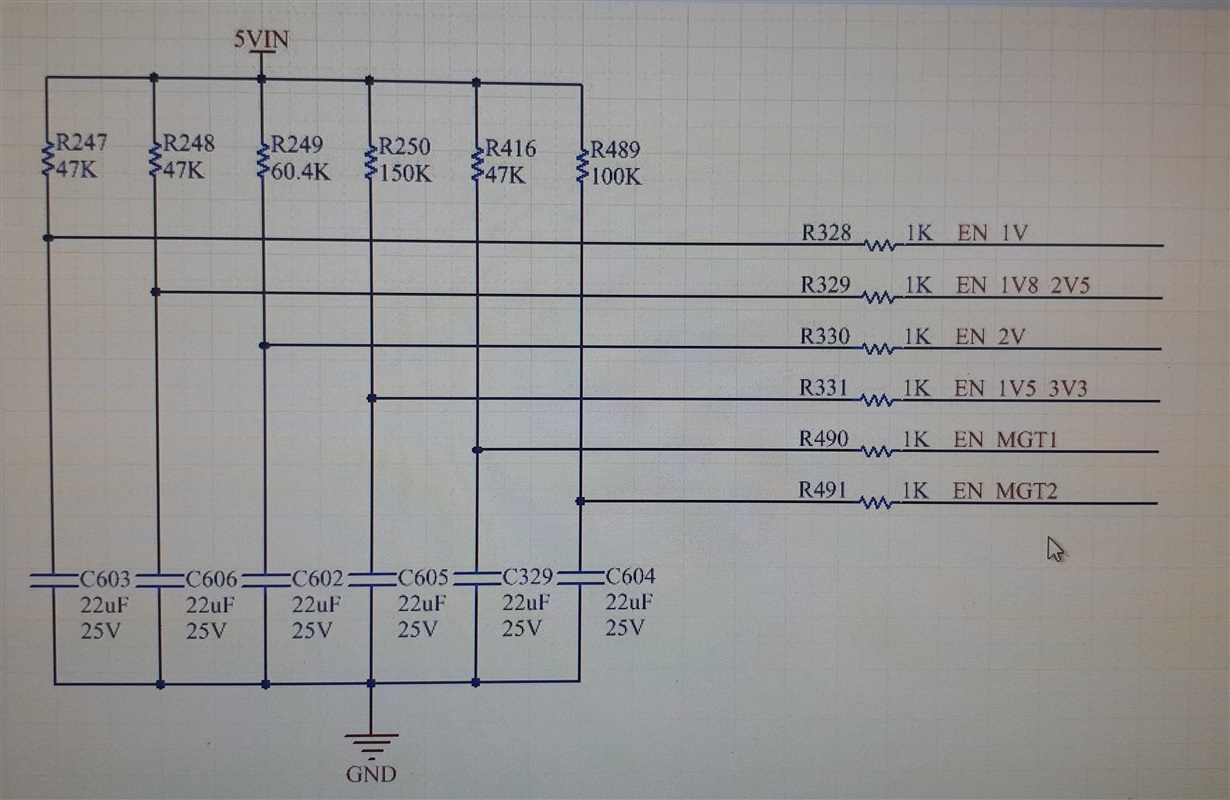Hi Ti,
I encountered similar problem in e2e:
https://e2e.ti.com/support/power-management/f/196/t/301301
My EN sequence circuit is attached. EN_1V is going directly TPS53353 EN pin.
In my measurement;
5VIN: 4,96V
EN_1V: 5,06V
Difference between two net is 100mV.
Current= 100mV/48k= 2uA
My first question: TPS53353 EN pin is sourcing current. Is this normal?
My second question: TPS53353 EN pin is sourcing 2uA. Datasheet states that max. EN input current is 1uA. What’s wrong?
Regards,
Eren



